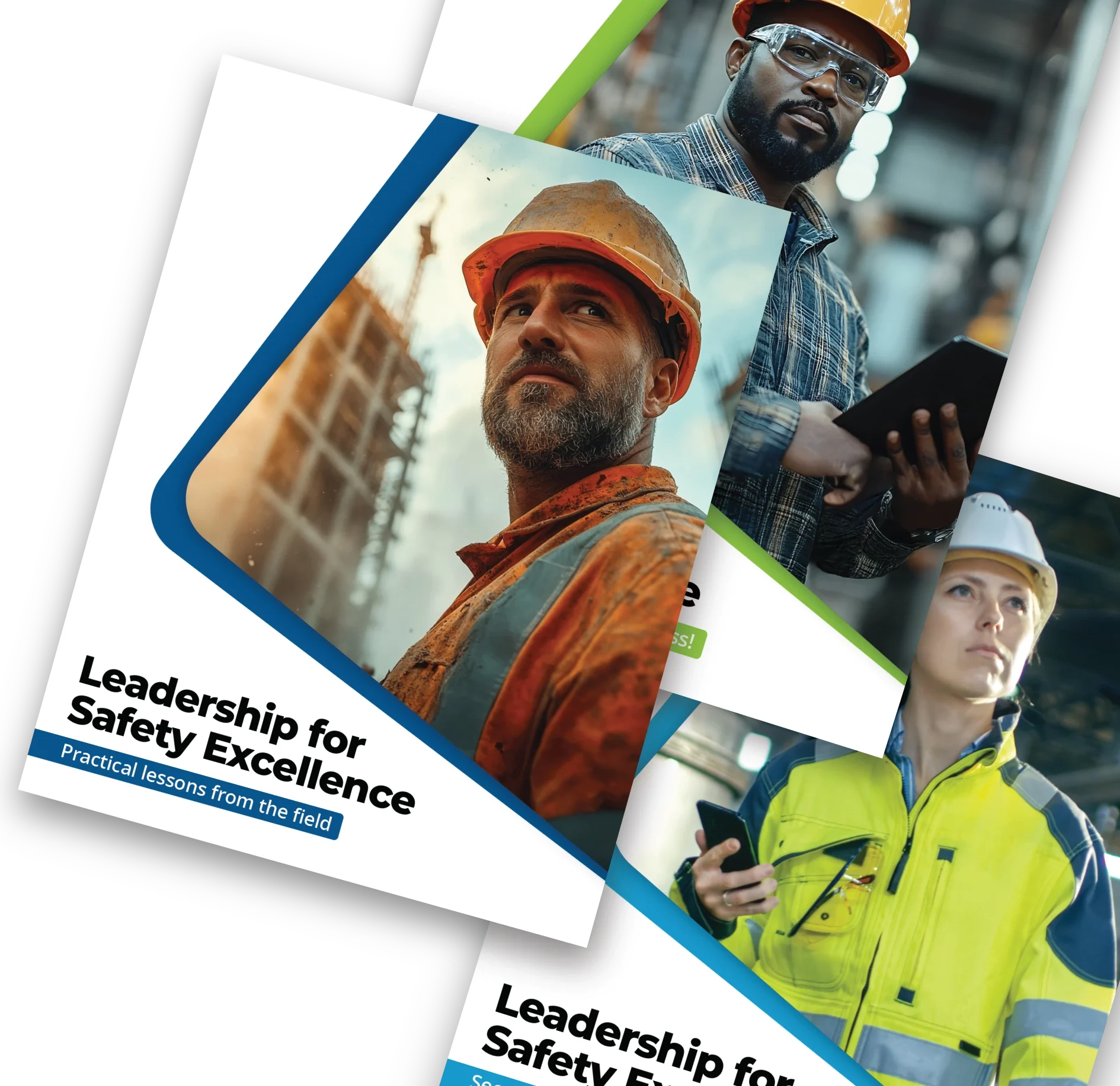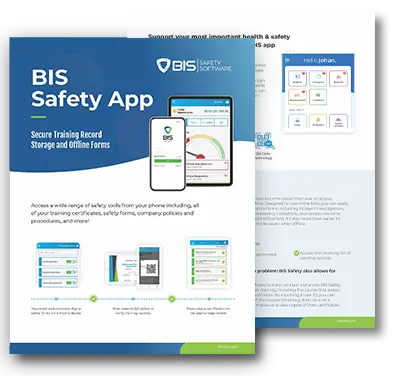
Risk Reduction Tips for National Safety Month
National Safety Month is now in its third week which means companies all over are focusing on Risk Reduction. To that end, let’s dive into engaging and practical ways enterprises and small teams alike reduce risks.
Engage Your Team for Risk Reduction Week
First, let’s look at the two most common ways teams are getting their people thinking about how to reduce risk:
Turn Safety Training into a Game
Who says safety training has to be boring? Spice it up by turning it into a game. Create a safety quiz or a scavenger hunt where employees have to find and correct potential hazards around the workplace. Not only does it make learning about safety more engaging, but it also encourages teamwork and attentiveness, which are key components of a safe working environment.

Reward the Safety Stars
Everyone loves recognition and a little competition. Why not introduce a monthly “Safety Star” award? Nominate employees who have gone above and beyond in maintaining safety protocols or have come up with innovative safety ideas. This can be anything from always wearing personal protective equipment to suggesting improvements in safety procedures. Rewards could be a prime parking spot, a gift card, or an extra day off. This not only boosts morale but also promotes a culture of safety.
Understanding the Basics of Risk Management
What is Risk Management?
Risk management involves identifying, assessing, and controlling potential hazards. It’s a proactive process aimed at preventing incidents before they occur, rather than reacting to them after the fact.
Why is Risk Management Important?

- Prevent Incidents: Effective risk management reduces the likelihood of accidents, which can cause serious injuries or fatalities.
- Cost Efficiency: Minimizing risks can also prevent costly disruptions and damages, saving significant amounts over time.
- Regulatory Compliance: Adhering to safety standards and regulations is not just mandatory but essential for legal and ethical operations.
Regular Safety Audits and Assessments
The Importance of Safety Audits
Conducting regular safety audits is vital due to the ever-changing nature of industrial and construction environments. Audits provide a systematic review of operations, helping to identify and mitigate potential risks.
Tips for Effective Safety Audits:
- Use a Standardized Checklist: Ensure that all aspects of safety are reviewed consistently.
- Involve Employees: Engage workers at all levels to get a comprehensive view of workplace safety.
- Regular Updates: Continually refine and improve safety protocols based on audit findings.
Impact of Regular Audits:
- Companies that conduct regular safety audits can reduce workplace accidents by up to 60%, according to industry studies.
- Regular assessments help in recognizing 70% of potential hazards before they lead to any harm.
Training and Continued Education
Ongoing Training as a Safety Pillar
Continuous training is essential, especially in industries where the risks are significant. It ensures that all team members are up-to-date on the latest safety protocols and equipment handling.
Critical Training Programs Include:
- Hazardous Material Handling: Proper techniques to manage and dispose of hazardous substances.
- Emergency Response Training: Skills to respond effectively to workplace emergencies, which can save lives.
- Equipment Safety Operations: Comprehensive training on the safe operation of machinery and equipment.
Benefits of Continuous Education:
- Reduced Accident Rates: Ongoing education and training can decrease the incidence of workplace accidents by up to 40%.
- Enhanced Employee Confidence: Well-trained employees are more confident and competent, contributing to overall safer work environments.

Investing in Quality Equipment
Why High-Quality Equipment Matters
Investing in high-quality, well-maintained equipment is key to reducing workplace accidents. Superior equipment operates more reliably and is less likely to malfunction, which can be a major cause of injuries in the workplace.
Choosing and Maintaining Equipment:
- Select Certified Equipment: Opt for machinery and tools that meet industry standards and certifications.
- Regular Maintenance: Implement a routine check-up plan to ensure equipment remains in optimal condition.
- Train Employees on Proper Use: Ensure that everyone who uses the equipment is fully trained on its operation.
Impact of Quality Equipment:
- A study shows that using well-maintained equipment can reduce the risk of accidents by up to 25%.
Implementing a Safety-First Culture
Creating a Safety-First Workplace
The cornerstone of reducing risk is fostering a safety-first culture where safety is prioritized at all levels of an organization. This approach not only protects employees but also enhances overall operational efficiency.
Promoting a Safety Mindset:
- Safety Incentives: Implement reward programs for safe behavior to motivate adherence to safety protocols.
- Regular Safety Meetings: Hold weekly or monthly meetings to discuss safety updates, challenges, and improvements.
- Visibility of Safety Metrics: Share safety performance data with the team to highlight the importance of safety measures.
Benefits of a Safety-First Culture:
- Companies with a strong safety culture have seen up to a 70% decrease in incident rates.
Utilizing Technology for Safer Work Environments
Technology as a Risk Mitigator
Modern technology offers new ways to enhance safety measures. From wearables that monitor vitals to software that predicts potential hazards, technology can play a pivotal role in workplace safety.
Technological Tools to Consider:
- Wearable Safety Devices: These can monitor heart rate, detect falls, and send alerts in emergencies.
- Safety Management Software: Programs that streamline safety audits, track compliance, and manage documentation.
- Drones for Inspection: Use drones to inspect hard-to-reach areas or hazardous environments without risking human safety.
Emergency Preparedness
Essentials of Emergency Response
Having a robust emergency response plan is crucial for handling unexpected situations effectively, minimizing injuries, and potentially saving lives.
Creating and Practicing Emergency Drills:
- Develop Comprehensive Plans: Include evacuation routes, meeting points, and roles of each employee.
- Regular Drills: Conduct drills regularly to ensure everyone knows their role and can act swiftly during an actual emergency.
- Update and Review: Continuously update the emergency plan to reflect new hazards or changes in the workplace layout.

Risk Reduction Software and Resources
To support Risk Reduction Week, BIS is offering special promotions on our risk management training resources and software solutions:
First 3 Months Free!
Risk Management Course Subscription
Get comprehensive training in areas such as Hazard Identification, Incident Analysis, and Emergency Preparedness with this extensive training package. And if you want to make Risk Management easier, check out our dedicated page for Risk Management Solutions.
Conclusion
As we wrap up, remember that the safety of a workplace is a shared responsibility. From management investing in quality equipment to each employee embracing a safety-first culture, every action counts. This National Safety Month, let’s renew our commitment to not just follow but champion safety standards.



































